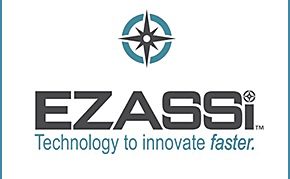Are you a paralegal aiming to enhance your case management skills or looking for case management software for lawyers? Ready to leverage the capabilities of technology and elevate your productivity? Look no further! In this comprehensive guide, we will delve into the world of efficient paralegal case management and explore how innovative technologies can streamline your workflow, boost efficiency, and elevate your legal proficiency. Whether you’re an experienced professional or new to the field, get ready to harness technology’s full potential as we uncover valuable insights, strategies, and tools that distinguish successful paralegals.
Introduction to Case Management Technology
As a paralegal, you’re likely familiar with technology’s role in the legal field. But what exactly is case management technology? And how can it effectively support your paralegal work?
Case management technology refers to software or online platforms used for managing administrative tasks in a law practice, such as client and case intake, calendaring, document management, and billing. While various case management technologies exist, they all share a common objective: enhancing workflow efficiency in your practice.
Properly employed, case management technologies are invaluable assets. They help track deadlines, centralize client and case information, automate repetitive tasks, and more. In essence, they enable you to work smarter.
Whether you’re new to case management technology or seeking ways to optimize existing tools, this guide is your go-to resource. We’ll delve into leading case management technologies, offering tips on effective utilization to bolster your paralegal work.
Benefits of Technology in Paralegal Practice
Technology has revolutionized the legal profession, and paralegals are embracing it to improve their work. Here are key benefits of technology integration in paralegal practice:
Enhanced efficiency and productivity: Automation and online tools save time on tasks, allowing paralegals to focus on complex assignments and provide greater client value.
Improved accuracy: Automation and research tools minimize errors in legal documents and work products.
Greater flexibility: Technology enables remote work and 24/7 access to tools, facilitating deadline management and last-minute adjustments.
Elevated client service: Online tools facilitate client communication and updates, while case management systems grant clients anytime access to their case details, improving communication and understanding.
Types of Case Management Software
Paralegals have access to various case management software types, each with distinct features and advantages:
Law Firm Case Management Software: Designed for law firms, this software manages all aspects, from client intake to billing, case management, and document production.
Legal Practice Management Software: Optimized for effective practice management, it covers client relations, financial management, and case tracking.
Solo Practitioner Case Management Software: Tailored for solo practitioners, it encompasses client intake, billing, case management, and document production.
Online Case Management Software: Web-based and accessible from anywhere, it suits remote work and information sharing among geographically dispersed colleagues and clients.
Cloud-Based Case Management Software: Hosted in the cloud, it offers remote access, serving paralegals working from diverse locations.
Best Practices for Setting Up and Using a Case Management System
Effective case management systems adhere to best practices. Begin by selecting the right system – research various options to match your firm’s needs. After selection, ensure proper setup, including inputting case, client, and deadline data. Team members should have access and understanding of the system.
Consistent and efficient system use entails deadline tracking, client communication, and regular updates. Periodic reviews and adjustments maintain system relevance and efficacy.
Tips for Choosing the Right Software
Selecting software demands consideration of multiple factors:
- Budget: Choose within budget limits.
- Necessary Features: Opt for software offering needed features.
- Ease of Use: Prioritize user-friendly software.
- Compatibility: Ensure compatibility with your devices.
- Comparison: Compare options for optimal value.
Choosing appropriate software enhances paralegal efficiency and organization.
Optimizing Technology for Maximum Efficiency
Maximize technology efficiency by clarifying goals, learning software features, and maintaining system organization. Regular updates and efficient resource utilization maximize technology’s potential.
Strategies for Ensuring Data Security
Ensure data security through physical and confidentiality measures. Secure data storage devices, use encryption, and implement access restrictions to safeguard sensitive information.
Conclusion
Technology’s integration in paralegal case management is pivotal for successful legal representation. Utilizing tools like case management software and document automation optimizes workflow and strengthens case building. Staying updated on technological advancements empowers paralegals to harness technology’s potential in their work.



































